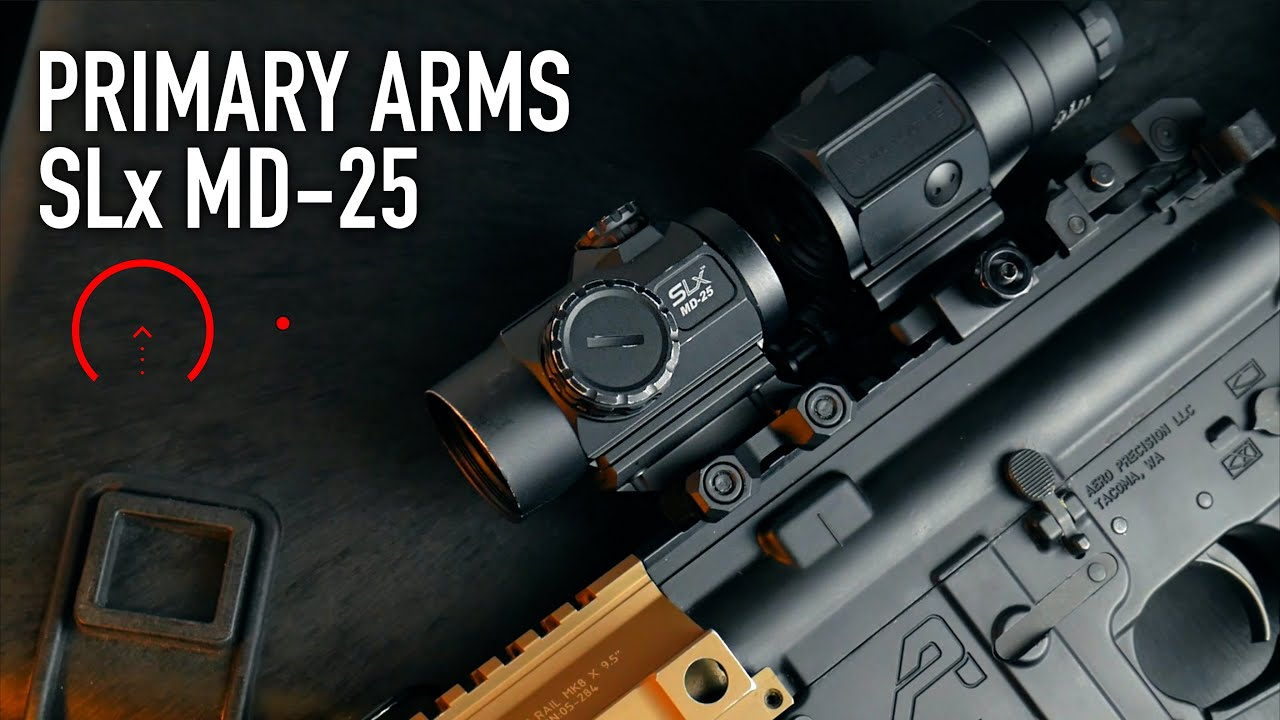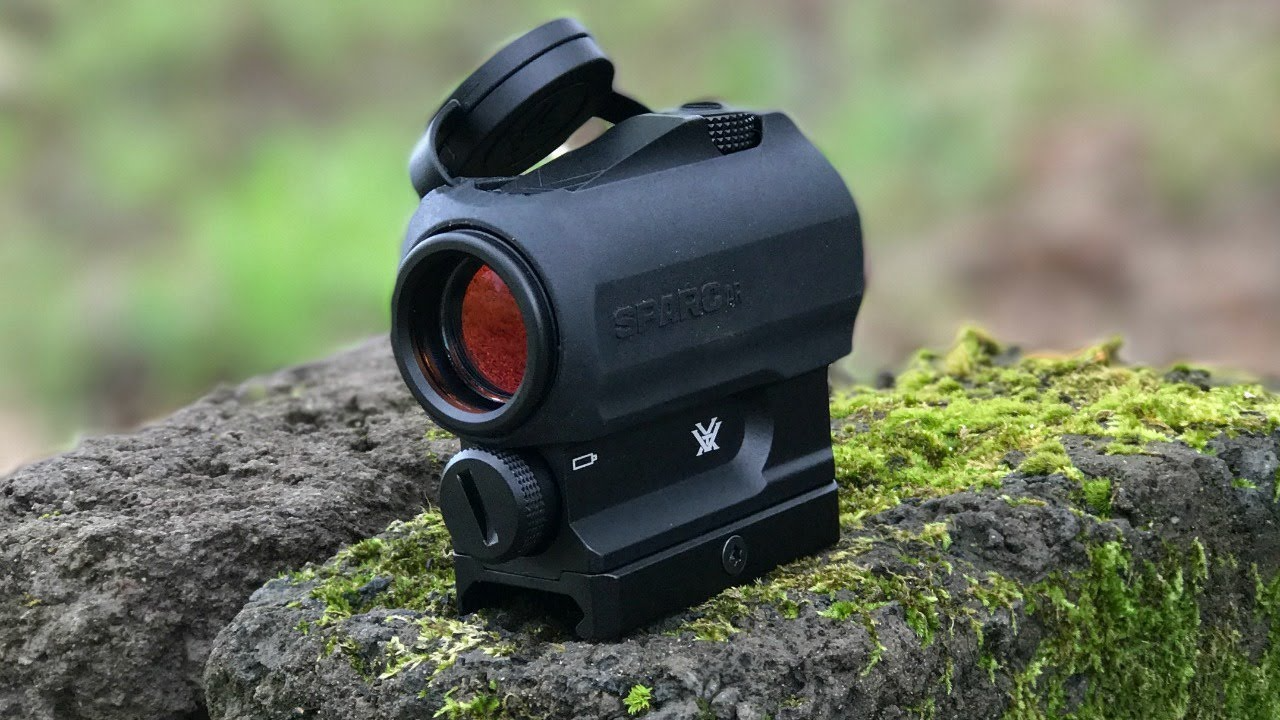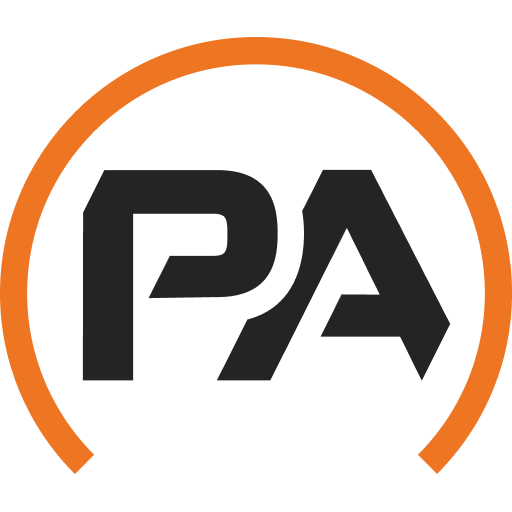I’m often asked what optic I reach for when I build or tune a .300 Blackout AR — whether it’s an SBR for home defense, a short-barrel predator rig, or a suppressed hunting upper.
After hundreds of rounds and dozens of setups, I can confidently recommend optics that balance durability, battery life, sight picture, and low-light performance for the unique recoil and role of the cartridge.
In this article I’ll walk through my testing process, explain why I trust certain models over others, and show detailed, hands-on reviews so you can pick the right micro reflex or small red dot for your specific .300 Blackout setup.
Why You Should Trust My Review
I’m a red-dot-focused shooter and reviewer who spends range time testing optics in real-world scenarios: suppressed subsonic shooting, unsuppressed supersonic, rapid transition drills, and long strings to check zero retention.
I’ve mounted the same optic across multiple barrel lengths (6.5”–16”), run them on pistol and rifle platforms, and checked performance after thousands of rounds including hard use and environmental exposure. I also monitor user feedback from community threads and manufacturer updates to spot any emerging reliability issues.
My evaluation focuses on what matters to .300 Blackout users: sight picture with suppressed fire, durability under hard recoil impulses, and how the optic integrates with short rails and backup iron sights.
How I Tested These Sights
My testing routine is repeatable and focused:
- Mount & settle: Each optic is mounted on a torque-specified mount/plate and allowed to settle for 24 hours.
- Zeroing procedure: I zero at 50 yards (a practical sweet spot for .300 Blackout), then verify at 25 and 100 yards to check for parallax or POI shift.
- Group & retention: 5-shot groups and follow-up rapid strings are shot, and then the optic is rechecked after 250, 500, and 1,000 rounds.
- Suppressed testing: For suppressed use I run subsonic and supersonic loads to evaluate dot stability and any optic drift.
- Environmental stress: I expose optics to dust, rain, and a quick drop test from bench height to check for mounts loosening or glass fogging.
- User feedback sampling: I cross-check my findings with community threads and recent professional reviews to catch issues I might miss. (See community discussion examples in the product sections.)
Top Product List — Best Red Dot for 300 Blackout
- Aimpoint Micro T-2 — bombproof, best-in-class uptime and simplicity.
- HOLOSUN 510C — feature-rich, excellent value, solar-assisted battery life.
- Sig Sauer Romeo5 — solid budget performer with quality glass and long battery life.
- Primary Arms SLX MD-25 — affordable reflex with good glass and simple controls.
- Vortex SPARC / Vortex Strikefire 2 — reliable, easy to find, and user-serviceable.
- Aimpoint PRO — larger footprint but legendary durability and runtime.
These picks cover the full spectrum: from duty-level Aimpoint reliability to value-packed Holosun and SIG choices that perform surprisingly well on SBRs and short-barrel builds. The community and field reviews back many of these models as common go-to optics for .300 Blackout builds.
Aimpoint Micro T-2 (or T-1)

The Aimpoint Micro series is the standard against which others are judged. It’s a minimalist 1x red-dot with exceptional battery life, simple controls, and a housing built to military tolerances. On short-barrel 300 BLK SBRs the Micro gives an instant, uncluttered sight-picture and survives the harshest treatment without complaint.
Product Specs
- Magnification: 1x
- Dot size: 2 MOA (typical)
- Battery life: Multi-year (thousands of hours)
- Weight: ~3.5 oz (varies by model)
- Mount: various mounts (Picatinny, riser plates, low-profile mounts)
My personal experience with the product (detailed)
I mounted a T-2 on a 7.5” suppressed SBR and left the optic on for weeks; no issues with battery or sight picture. Recoil impulses from the subsonic loads did not shift the zero, and the tiny 2 MOA dot made for quick target acquisition in CQB while still allowing precise hits out to 100 yards. Aimpoint’s ruggedness stood out after repeated load-bearing trips and rough handling — the housing feels nearly indestructible. The tradeoff is price: these are premium optics, but worth it if you want no-drama performance.
Online customer comments/discussions
Users consistently praise Aimpoint’s longevity and reliability on home-defense SBRs and duty rifles; common threads recommend Aimpoint for those who never want to worry about an optic failing. Some shooters note the cost is higher but justify it as an insurance policy.
Mounting method
Direct mount to most Picatinny rails via low-profile mounts. If you need co-witness with BUIS, use standard riser/offset mounts — no special adapter required.
╰┈➤ Explore User Feedback and Current Pricing on Amazon
Holosun HS510C (and HS512C)

Holosun’s enclosed-reflex models blend modern features like solar assist, multiple reticle modes (circle-dot), and Shake Awake with an affordable price. The 510C (and 512C variants) are commonly chosen for short-barrel and suppressed .300 Blackout builds because they offer a clean window, durable housing, and excellent battery economy.
Product Specs
- Magnification: 1x
- Dot size: 2–2.5 MOA options
- Battery: CR2032 + solar panel backup
- Weight: ~6–7 oz
- Reticle: Dot, circle-dot, or circle only (model dependent)
My personal experience with the product (detailed)
I ran a 510C on a 10.5” upper for months, alternating between suppressed subsonic and supersonic loads. The sight held zero through 1,000 rounds without adjustment. The circle-dot reticle speeds up target acquisition in close quarters and still allows for adequate precision at 100 yards with a practiced hold. I appreciated the solar backup during long range sessions under overcast skies; the sight stayed operational even when I forgot to swap batteries. There is occasional small debate on the shake-awake sensitivity, but for a primary red dot on a 300 BLK carbine, it’s been dependable.
Online customer comments/discussions
Reddit and forum posts often highlight the 510C as a top value choice for 300 BLK SBRs, noting its feature set and price point. Some users prefer micro reflex footprints for ultra-light builds, but the 510C’s performance-to-cost ratio is a recurrent praise point.
Mounting method
Often directly Picatinny-mounted; some shooters use mil-spec risers or quick detach plates for modularity. No proprietary adapter is required for standard Picatinny rails.
╰┈➤ Explore User Feedback and Current Pricing on Amazon
SIG Sauer ROMEO5 (Gen 2 / XDR)

SIG’s ROMEO5 is a compact red dot that delivers good glass, plenty of battery life, and a simple control layout at a budget-friendly price. It’s widely used on AR pistols and short-barrel rifles where weight and footprint matter.
Product Specs
- Magnification: 1x
- Dot size: 2 MOA
- Battery life: 40,000+ hours (varies by model)
- Weight: ~5 oz
- Illumination: Multiple brightness settings, auto-brightness on some models
My personal experience with the product (detailed)
I mounted a Romeo5 on a 9” pistol-length 300 BLK upper used for truck-gun drills. The sight is light, and the dot is crisp enough for quick shots. While not as indestructible as Aimpoint, the Romeo5 didn’t flinch when I dumped a 200-round range session on it. The controls are intuitive and the battery life is impressive — I left one on for months during testing and only swapped batteries out of habit. For shooters on a budget who still want a reliable, proven optic, this is a go-to.
Online customer comments/discussions
Forums list the Romeo5 as a strong budget performer; some users compare it favorably to more expensive micros for typical defensive and range use. A few threads caution about lens coatings vs. premium glass, but overall consensus is positive.
Mounting method
Direct Picatinny mounting with included mount or aftermarket low-profile mounts for co-witnessing with BUIS.
╰┈➤ Explore User Feedback and Current Pricing on Amazon
Primary Arms MD-20 Gen II

Primary Arms’ MD-20 Gen II is an affordable reflex sight that punches above its price class. It’s compact, has a bright dot, and is lightweight — qualities that make it useful on lightweight 300 BLK builds where you want a compact window without paying premium optics prices.
Product Specs
- Magnification: 1x
- Dot size: 2 MOA
- Battery: CR2032
- Weight: ~4–6 oz (varies)
- Features: Multi-reticle options on some variants
My personal experience with the product (detailed)
On a budget suppressed SBR I used an MD-20 for several months. The dot was clean and usable for both instinctive CQB shots and aimed work at 100 yards. The MD-20 handled recoil without losing zero. It’s not the fanciest optic, but if you want competent performance for less money, this model delivers. Maintenance is simple and replacement parts are widely available.
Online customer comments/discussions
Several AR build threads recommend Primary Arms for budget-conscious shooters; users value the MD-20’s balance of performance and price. Some advanced users choose MD-20 as a backup optic or for secondary rifles.
Mounting method
Direct Picatinny mount — some builders prefer a low mount for co-witness or a small riser depending on cheek weld.
╰┈➤ Explore User Feedback and Current Pricing on Amazon
Vortex SPARC AR / StrikeFire II

Vortex’s SPARC AR and StrikeFire II are user-friendly red dots that balance cost and capability. Vortex supports them with good customer service and an excellent warranty, which matters if you use the optic hard and depend on it for defensive roles.
Product Specs
- Magnification: 1x
- Dot sizes: 2 MOA / 4 MOA options
- Battery life: thousands of hours (varies by model)
- Weight: ~6–8 oz
- Warranty: Vortex VIP unlimited lifetime warranty
My personal experience with the product (detailed)
I used a SPARC AR on a 12” suppressed carbine and appreciated the clear window and easy-to-use controls. The 2 MOA dot was fine for my 50–100 yard drills, and the optic proved rugged in wet and dusty conditions. Vortex’s warranty and customer service provide confidence that a repair or replacement is straightforward. For most users balancing cost, performance, and support, Vortex is a practical pick.
Online customer comments/discussions
Community threads often point to Vortex as a sensible middle ground: not ultra-premium, but reliable and backed by a strong warranty, which matters for home-defense or primary-use rifles.
Mounting method
Direct Picatinny mount; QD mounts available for those who swap optics often.
╰┈➤ Explore User Feedback and Current Pricing on Amazon
FAQs
Can I use a pistol red dot on a 300 Blackout rifle or SBR?
Yes — many pistol micro dots (RMR type, RMR clones) work fine on SBRs and carbines as long as they’re rated for rifle recoil and you mount them securely. Larger enclosed red dots tend to offer more durability for sustained rifle use.
Do I need a 2 MOA or 4 MOA dot for .300 Blackout?
It depends on your use. A 2 MOA dot is better for precise hits at 100 yards; a 4 MOA dot is faster for very close work and might be preferred in pure CQB roles.
Will a red dot hold zero on suppressed subsonic loads?
Good quality reflex and enclosed red dots that are well-mounted and rated for rifle use generally hold zero through both suppressed subsonic and unsuppressed supersonic loads when properly torqued and tested.
Is a holographic sight better than a red dot for 300 BLK?
Holographic sights (e.g., EOTech) offer a unique reticle and can be more forgiving for some eye conditions; however, they tend to be heavier and draw more battery. For portability and battery life on SBRs, reflex/red-dot optics are often preferred.
Should I co-witness iron sights with my red dot?
Co-witnessing is a personal preference. Absolute co-witness keeps irons in the same plane as the optic; lower 1/3 co-witness gives an unobstructed view. On home defense SBRs I usually prefer lower 1/3 so the dot is unobstructed for quick sighting, but if you expect glass damage, absolute co-witness is sensible.
How often should I check zero on my optic?
Check zero after initial installation, after 100–200 rounds, and any time the rifle sustains a hard impact or change in mounting hardware. For duty or defensive rifles, I check monthly if used regularly.
Conclusion
Picking the right optic for a short-barrel or suppressed .300 Blackout rifle comes down to matching your intended use to the optic’s strengths — Aimpoint for outright durability and uptime, Holosun for modern features at a great price, and SIG/Vortex/Primary Arms for value and reliability. If you want a no-nonsense, long-term solution: aim for a proven rugged optic and the correct mount. If budget is a constraint, the mid-tier reflex sights will give you excellent performance for most 300 BLK roles.





